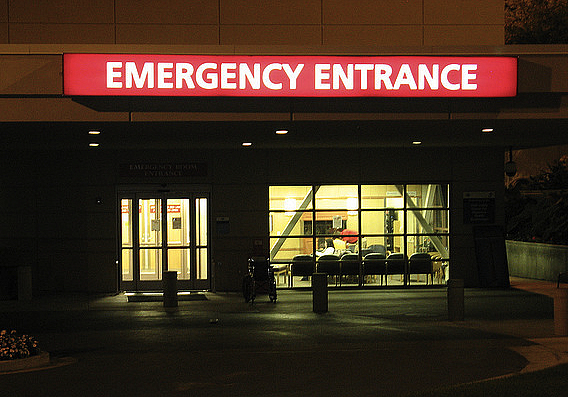Data shows kids on Medicaid visit ER more often

At the start of this year, a study published in Science raised alarms and generated a flurry of media attention after it found that Medicaid recipients in Oregon visited the emergency department 40 percent more than their otherwise similar peers.
Newer data from the Centers for Disease Control and Prevention now shows that children on Medicaid nationwide are more likely to have visited the ER than uninsured kids and those on private insurance.
The recent report adds to concerns that the expanding ranks of Medicaid enrollees are not yet foregoing costly care in emergency departments in exchange for regular care from primary care providers. Whether that’s because Medicaid lowers the cost of an ER visit or because access to primary care providers is limited in the face of surging demand remains to be seen.
The July data brief from the CDC’s National Center for Health Statistics found that about 25 percent of children under the age of 18 on Medicaid visited the ER at least once in 2012. That’s compared to about 16 percent of uninsured kids who visited the ER at least once, or 13 percent of those on private insurance.
Kids on Medicaid were also far more likely to visit the ER two times or more: Nearly 10 percent of kids on Medicaid did so, compared to 3 percent of privately insured kids and about 5 percent of uninsured kids. These latest statistics are based on surveys collected for 13,275 children through the CDC’s National Health Interview Survey.
The report also finds differences in how kids on Medicaid are using emergency departments. “Children with Medicaid were less likely to visit the ER because of reasons reflecting the seriousness of the medical problem and more likely to visit for other reasons,” the authors write. “Other reasons” include things such as their doctor’s office wasn’t open, or the ER was the closest provider.
The CDC report doesn’t explore why kids on Medicaid are using the ER more but does briefly suggest that part of the problem may stem from kids not having a usual source of care: “Some reasons for ER visits (e.g., ‘no other place to go’ and ‘doctor’s office [was] not open’) may depend on whether a child has a regular source of care, an association seen previously among adults.”
That could be, but research from Oregon’s Medicaid expansion found that new enrollees were visiting both their primary care doctor and the ER more often. Sarah Kliff summarized the results from the Oregon study in The Washington Post:
With financial barriers removed, Medicaid patients see their primary care doctor more – and also go to the emergency department at an increased frequency. Medicaid enrollees made, on average, 1.43 trips to the emergency department during the 18-month study period, compared to an average of 1.02 visits among those who entered the Medicaid lottery but did not gain coverage.
If one of the goals of the Affordable Care Act is to curb runaway costs, then the current trend of Medicaid kids using the ER more often isn’t particularly encouraging. That’s because emergency departments are famously expensive places to receive care.
A 2013 NIH-funded study found that the median charge for the 10 most common problems treated in the ER was $1,233. “Emergency department charges for common conditions are expensive with high charge variability,” the researchers concluded.
Expensive and increasingly so: A decade earlier, in 2003, the average ER expenditure was $560, with the median charge around $300.
In her deeply reported “Paying Till It Hurts” series for The New York Times, Elisabeth Rosenthal unearthed outrage-inducing stories of three stitches in the ER costing $2,229, or “a dab of skin glue for $1,696.”
Here’s Rosenthal explaining how the ER’s financial role has changed:
Once perennial money pits, emergency rooms have become big moneymakers for most hospitals in the last decade, experts say, as they raised their fees and “managed” their patient mix. … [E]mergency rooms are profit centers. That is why one of the simplest and oldest medical procedures — closing a wound with a needle and thread — typically leads to bills of at least $1,500 and often much more.
But the goal of health reform isn’t just to curb costs – it also aims to improve health outcomes by increasing access to primary care. That means not only ensuring access to primary care doctors but also breaking patients’ old habit of turning to the nearest ER for care.
It still remains to be seen if the trend continues or if Medicaid kids’ ER use drops as enrollees climb the learning curve. Will parents learn to use primary care providers early and often, and so reduce unnecessary ER visits? Or will the fact that Medicaid is largely picking up the ER costs lead to continued higher usage among both kids and adults?
For now at least, the ER remains a popular destination for kids on Medicaid. And that means there’s plenty of work left to do when it comes to expanding access to primary care as well as educating an expanding pool of parents in how to best navigate the public health system.
Photo by Rosser 321 via Flickr.

